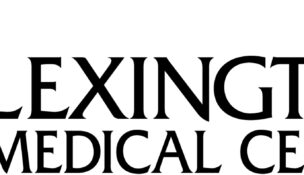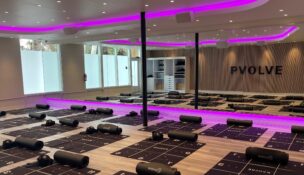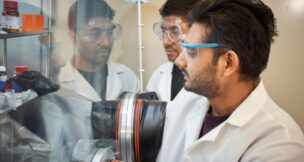Group works to bridge community health care gaps
Melinda Waldrop //March 9, 2021//
For the 25 million people in the United States with limited English proficiency, optimal health care outcomes after hospitalization and access to preventive care present challenges in the best of times.
In the midst of a pandemic that has now killed more than 500,000 people nationwide, reaching and providing health care services to the LEP population becomes even more critical, community outreach leaders say.
“One of the issues that I think has been compounded with the pandemic, or certainly spotlighted with the pandemic, is health access for people that don’t speak English,” said Kristen Giovanis, CEO of global, multilingual translation service provider United Language Group. “Picture yourself going to Thailand and ending up having to get health care. In a normal world, it’s overwhelming and difficult, but then in a pandemic, it’s a much bigger issue, a much larger challenge.”
United Language Group provides 10,000-plus linguists specializing in more than 200 languages to more than 3,000 companies worldwide in industries including law, life sciences, manufacturing and finance in an effort to bridge those gaps. With the COVID-19 pandemic highlighting inequities in health care, the organization is intensifying its outreach, developing a Health Outcomes Solutions division and implementing a vaccine equity program aimed at providing education and information to LEP populations through resources such as community and cultural centers.
“We’re really focused on creating what we call cultural hubs, where we look at populations by geographies and create a health community engagement program (of) education, awareness, support with care coordination,” Giovanis said. “This is one of the biggest drivers that’s been proven to reduce health care costs nationally over the last few years as companies have understood have important it is to engage members in English or in whatever language and help them to be more advocates for their own health.”
United Language Group offers options for keeping LEP people engaged in health care such as provider phone support in specific languages and interpreters who work regularly with one provider to schedule appointments with, for instance, the members of Detroit’s 200,000-strong Arabic-speaking population. United Language Group’s data shows that population is within a five-mile radius, and it has deployed 17 resources in the region.
“Think about how difficult it might be to call a phone number that’s not set up in your language and to try to navigate a menu and understand where to go next,” said Abigail Katz, director of Health Outcomes Solutions. “We know that when that happens, there is a high disconnection rate. … The trust that’s built by having someone answer the phone in your language absolutely creates not only a more efficient experience but also just one that is going to engage the patient and hopefully position them to receive the right type of care.”
Two-way street
The benefits of such increased engagement benefit health care systems, as well. A study published in 2017 by the American Public Health Association attempted to measure the effect of providing interpreter services to patients less than 50 years of age discharged from an academic hospital between Jan. 15, 2007 and Jan. 15, 2010. From July 15, 2008 until March 14, 2009, a dual-handset interpreter telephone was available at every bedside.
During the eight-month intervention period, readmission rates for LEP patients decreased from 17.8% to 13.4%, while readmission rates for English-proficient patients increased from 16.7% to 19.7% during the same time period. After accounting for interpreter service costs, the estimated 119 averted readmissions accounted for around $161,404 savings per month for the hospital, the study found.
“The most complex and costly group of people in the nation we call the duals — dual Medicaid and Medicare,” Giovanis said. “Twenty percent of them are limited English proficient. It’s not only a social issue and a health care issue, it’s also a cost issue. This population just costs health care organizations much more because they don’t engage as much in proactive health care. They’re not as big of advocates for themselves. They don’t understand the tools to use necessarily, so they end up back in emergency room a lot faster than an English-speaking patient.”
Community outreach can help mitigate those costs, research shows. A February 2020 study found that every dollar invested annually by Medicaid on patients receiving support from the University of Pennsylvania’s community health worker program resulted in a $2.47 return on investment, with the savings stemming from reduced hospitalizations. That program addresses needs such as housing and food insecurity and transportation needs in underserved populations.
United Language Group’s vaccine equity program focuses on building trust within LEP communities, providing content in their languages and making sure community stakeholder engagement is achieved. Phone lines featuring frequently asked questions are provided, as well as on-site interpreting services, and follow-up is conducted to schedule second appointments or to contact those who don’t show up for their first shots.
“We’ve engaged several provider groups and we’re starting to get some pharmacy networks. They’re recognizing what a huge challenge it is to gain the trust,” Giovanis said. “There’s a trust issue within those populations, and that population makes up a significant part of what you consider the essential workforce — people that do food production, assembly lines at processing plants.”
In Minnesota, where United Language Group is based, participants enroll in a vaccine program and are called when they’re eligible.
“It’s only in English,” Giovanis said. “In Minneapolis, over 20% of the population doesn’t speak English. You’re leaving out a significant portion of the population, whereas if that content was translated into five or six languages, it would make it more accessible for at least 90% of the population.”
In states with larger LEP populations, more resources are usually available to address disparities, Giovanis said. In states such as South Carolina, with nearly 320,000 people, or 7%, of the state’s population who speak a language other than English at home according to the 2010 census, meeting those needs can be more challenging.
“If you’re in California, this is a daily issue, a daily challenge, but you’re being supported by more resources. There’s a larger community that has actually engaged,” she said. “What we’re seeing is there’s a real disparity in the states that haven’t had the big (LEP) populations because they haven’t had to learn healthier systems. The pandemic has put a massive spotlight on how big those disparities are.”
Katz said much of the work being done by the Health Outcomes Solutions division is too new to be quantified with hard data, but surveys and anecdotal snapshots show the outreach is working.
“When we follow the lead of the stakeholders in the community and we offer our services in a way that reaches those in the community, it’s a mutually satisfactory experience,” she said. “We know that the community is happy to know who the experts in health are. They’ve got folks to go to for anything from transportation assistance to health education on tobacco cessation to the best place to go get blood drawn.
“We hear from surveys and anecdotal reports great success at the local level. … The idea is that if we do our job right that we’re a long-term partner with stakeholders in the community and we will see those outcomes integrated with the communal health surveillance and profiles over time.”
That’s the ultimate goal: creating a post-pandemic environment where LEP and other underrepresented populations face less barriers to the health care that can improve their quality of life and costs to health care providers are reduced.
“We’ve always worked in this world, and our Health Outcome Solutions is a fairly new arm, but we’ve been working with health care for a long time and really trying to support LEP populations,” Giovanis said. “It was just eye-opening to see the disparity in health equity within LEP populations as well as the African-American population, any minority population. It’s just shocking to see that. It’s just played out on a world stage these past nine months, almost a year.
“We kept trying to talk about with our providers and payer clients about health equity. It’s not that it was minimized, it was just not as big of an issue. … It’s been eye-opening for our clients on the provider/payer side. It just played out in real time what we’ve been really positioning toward for the last couple of years in a very unfortunate way.”
i















